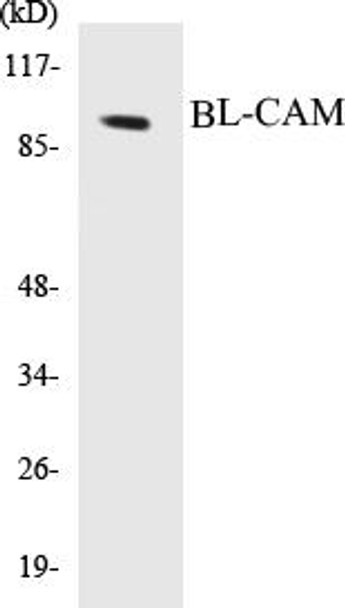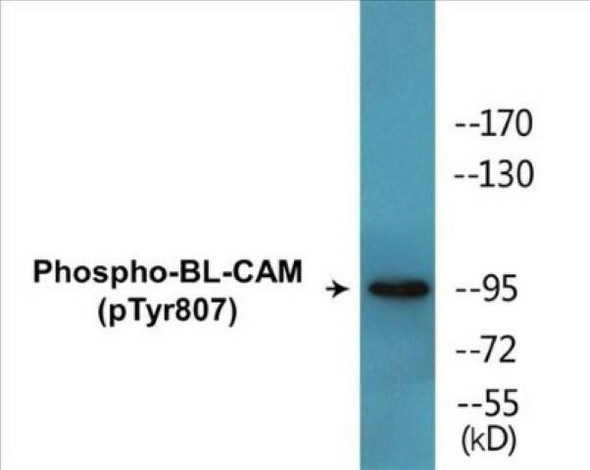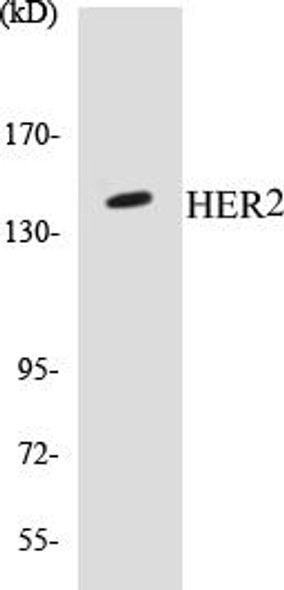Description
BL-CAM Colorimetric Cell-Based ELISA Kit
The BL-CAM Colorimetric Cell-Based ELISA Kit is a cutting-edge tool designed for the reliable and accurate detection of BL-CAM levels in cell samples. This kit offers high sensitivity and specificity, allowing for precise measurements and reproducible results across various research applications.BL-CAM, also known as L1CAM, is a cell adhesion molecule essential for various cellular functions, including cell migration, neurite outgrowth, and synaptic plasticity. Dysregulation of BL-CAM has been linked to various diseases such as cancer, autism, and neurological disorders, highlighting its importance as a biomarker for disease research and drug development.
With the BL-CAM Colorimetric Cell-Based ELISA Kit, researchers can gain valuable insights into BL-CAM expression levels in cell cultures, providing a deeper understanding of its role in cellular processes and disease pathology. Its user-friendly design and high-performance features make it an indispensable tool for studying BL-CAM biology and developing potential therapeutic interventions.
| Product Name: | BL-CAM Colorimetric Cell-Based ELISA Kit |
| Product Code: | CBCAB00547 |
| ELISA Type: | Cell-Based |
| Target: | BL-CAM |
| Reactivity: | Human |
| Dynamic Range: | > 5000 Cells |
| Detection Method: | Colorimetric 450 nmStorage/Stability:4°C/6 Months |
| Format: | 96-Well Microplate |
The BL-CAM Colorimetric Cell-Based ELISA Kit is a convenient, lysate-free, high throughput and sensitive assay kit that can detect BL-CAM protein expression profile in cells. The kit can be used for measuring the relative amounts of BL-CAM in cultured cells as well as screening for the effects that various treatments, inhibitors (ie siRNA or chemicals), or activators have on BL-CAM.
Qualitative determination of BL-CAM concentration is achieved by an indirect ELISA format. In essence, BL-CAM is captured by BL-CAM-specific primary antibodies while the HRP-conjugated secondary antibodies bind the Fc region of the primary antibody. Through this binding, the HRP enzyme conjugated to the secondary antibody can catalyze a colorimetric reaction upon substrate addition. Due to the qualitative nature of the Cell-Based ELISA, multiple normalization methods are needed:
| 1. | A monoclonal antibody specific for human GAPDH is included to serve as an internal positive control in normalizing the target absorbance values. |
| 2. | Following the colorimetric measurement of HRP activity via substrate addition, the Crystal Violet whole-cell staining method may be used to determine cell density. After staining, the results can be analysed by normalizing the absorbance values to cell amounts, by which the plating difference can be adjusted. |
| Database Information: | Gene ID: 933, UniProt ID: P20273, OMIM: 107266, Unigene: Hs.579691 |
| Gene Symbol: | CD22 |
| Sub Type: | None |
| UniProt Protein Function: | CD22: Mediates B-cell B-cell interactions. May be involved in the localization of B-cells in lymphoid tissues. Binds sialylated glycoproteins; one of which is CD45. Preferentially binds to alpha-2,6-linked sialic acid. The sialic acid recognition site can be masked by cis interactions with sialic acids on the same cell surface. Upon ligand induced tyrosine phosphorylation in the immune response seems to be involved in regulation of B-cell antigen receptor signaling. Plays a role in positive regulation through interaction with Src family tyrosine kinases and may also act as an inhibitory receptor by recruiting cytoplasmic phosphatases via their SH2 domains that block signal transduction through dephosphorylation of signaling molecules. Belongs to the immunoglobulin superfamily. SIGLEC (sialic acid binding Ig-like lectin) family. 2 isoforms of the human protein are produced by alternative splicing. |
| UniProt Protein Details: | Protein type:Membrane protein, integral; Cell surface Chromosomal Location of Human Ortholog: 19q13.1 Cellular Component: integral to plasma membrane; external side of plasma membrane Molecular Function:protein binding; carbohydrate binding Biological Process: cell adhesion |
| UniProt Code: | P20273 |
| NCBI GenInfo Identifier: | 6166019 |
| NCBI Gene ID: | 933 |
| NCBI Accession: | P20273.2 |
| UniProt Secondary Accession: | P20273,O95699, O95701, O95702, O95703, Q01665, Q32M46 Q92872, Q92873, Q9UQA6, F5GYU4, F5H7U3, |
| UniProt Related Accession: | P20273 |
| Molecular Weight: | 75,354 Da |
| NCBI Full Name: | B-cell receptor CD22 |
| NCBI Synonym Full Names: | CD22 molecule |
| NCBI Official Symbol: | CD22 |
| NCBI Official Synonym Symbols: | SIGLEC2; SIGLEC-2 |
| NCBI Protein Information: | B-cell receptor CD22; BL-CAM; CD22 antigen; T-cell surface antigen Leu-14; B-lymphocyte cell adhesion molecule; sialic acid binding Ig-like lectin 2; sialic acid-binding Ig-like lectin 2 |
| UniProt Protein Name: | B-cell receptor CD22 |
| UniProt Synonym Protein Names: | B-lymphocyte cell adhesion molecule; BL-CAM; Sialic acid-binding Ig-like lectin 2; Siglec-2; T-cell surface antigen Leu-14; CD_antigen: CD22 |
| Protein Family: | CD226 antigen |
| UniProt Gene Name: | CD22 |
| UniProt Entry Name: | CD22_HUMAN |
| Component | Quantity |
| 96-Well Cell Culture Clear-Bottom Microplate | 2 plates |
| 10X TBS | 24 mL |
| Quenching Buffer | 24 mL |
| Blocking Buffer | 50 mL |
| 15X Wash Buffer | 50 mL |
| Primary Antibody Diluent | 12 mL |
| 100x Anti-Phospho Target Antibody | 60 µL |
| 100x Anti-Target Antibody | 60 µL |
| Anti-GAPDH Antibody | 60 µL |
| HRP-Conjugated Anti-Rabbit IgG Antibody | 12 mL |
| HRP-Conjugated Anti-Mouse IgG Antibody | 12 mL |
| SDS Solution | 12 mL |
| Stop Solution | 24 mL |
| Ready-to-Use Substrate | 12 mL |
| Crystal Violet Solution | 12 mL |
| Adhesive Plate Seals | 2 seals |
The following materials and/or equipment are NOT provided in this kit but are necessary to successfully conduct the experiment:
- Microplate reader able to measure absorbance at 450 nm and/or 595 nm for Crystal Violet Cell Staining (Optional)
- Micropipettes with capability of measuring volumes ranging from 1 µL to 1 ml
- 37% formaldehyde (Sigma Cat# F-8775) or formaldehyde from other sources
- Squirt bottle, manifold dispenser, multichannel pipette reservoir or automated microplate washer
- Graph paper or computer software capable of generating or displaying logarithmic functions
- Absorbent papers or vacuum aspirator
- Test tubes or microfuge tubes capable of storing ≥1 ml
- Poly-L-Lysine (Sigma Cat# P4832 for suspension cells)
- Orbital shaker (optional)
- Deionized or sterile water
*Note: Protocols are specific to each batch/lot. For the correct instructions please follow the protocol included in your kit.
| Step | Procedure |
| 1. | Seed 200 µL of 20,000 adherent cells in culture medium in each well of a 96-well plate. The plates included in the kit are sterile and treated for cell culture. For suspension cells and loosely attached cells, coat the plates with 100 µL of 10 µg/ml Poly-L-Lysine (not included) to each well of a 96-well plate for 30 minutes at 37°C prior to adding cells. |
| 2. | Incubate the cells for overnight at 37°C, 5% CO2. |
| 3. | Treat the cells as desired. |
| 4. | Remove the cell culture medium and rinse with 200 µL of 1x TBS, twice. |
| 5. | Fix the cells by incubating with 100 µL of Fixing Solution for 20 minutes at room temperature. The 4% formaldehyde is used for adherent cells and 8% formaldehyde is used for suspension cells and loosely attached cells. |
| 6. | Remove the Fixing Solution and wash the plate 3 times with 200 µL 1x Wash Buffer for five minutes each time with gentle shaking on the orbital shaker. The plate can be stored at 4°C for a week. |
| 7. | Add 100 µL of Quenching Buffer and incubate for 20 minutes at room temperature. |
| 8. | Wash the plate 3 times with 1x Wash Buffer for 5 minutes each time. |
| 9. | Add 200 µL of Blocking Buffer and incubate for 1 hour at room temperature. |
| 10. | Wash 3 times with 200 µL of 1x Wash Buffer for 5 minutes each time. |
| 11. | Add 50 µL of 1x primary antibodies (Anti-BL-CAM Antibody and/or Anti-GAPDH Antibody) to the corresponding wells, cover with Parafilm and incubate for 16 hours (overnight) at 4°C. If the target expression is known to be high, incubate for 2 hours at room temperature. |
| 12. | Wash 3 times with 200 µL of 1x Wash Buffer for 5 minutes each time. |
| 13. | Add 50 µL of 1x secondary antibodies (HRP-Conjugated AntiRabbit IgG Antibody or HRP-Conjugated Anti-Mouse IgG Antibody) to corresponding wells and incubate for 1.5 hours at room temperature. |
| 14. | Wash 3 times with 200 µL of 1x Wash Buffer for 5 minutes each time. |
| 15. | Add 50 µL of Ready-to-Use Substrate to each well and incubate for 30 minutes at room temperature in the dark. |
| 16. | Add 50 µL of Stop Solution to each well and read OD at 450 nm immediately using the microplate reader. |
(Additional Crystal Violet staining may be performed if desired – details of this may be found in the kit technical manual.)






